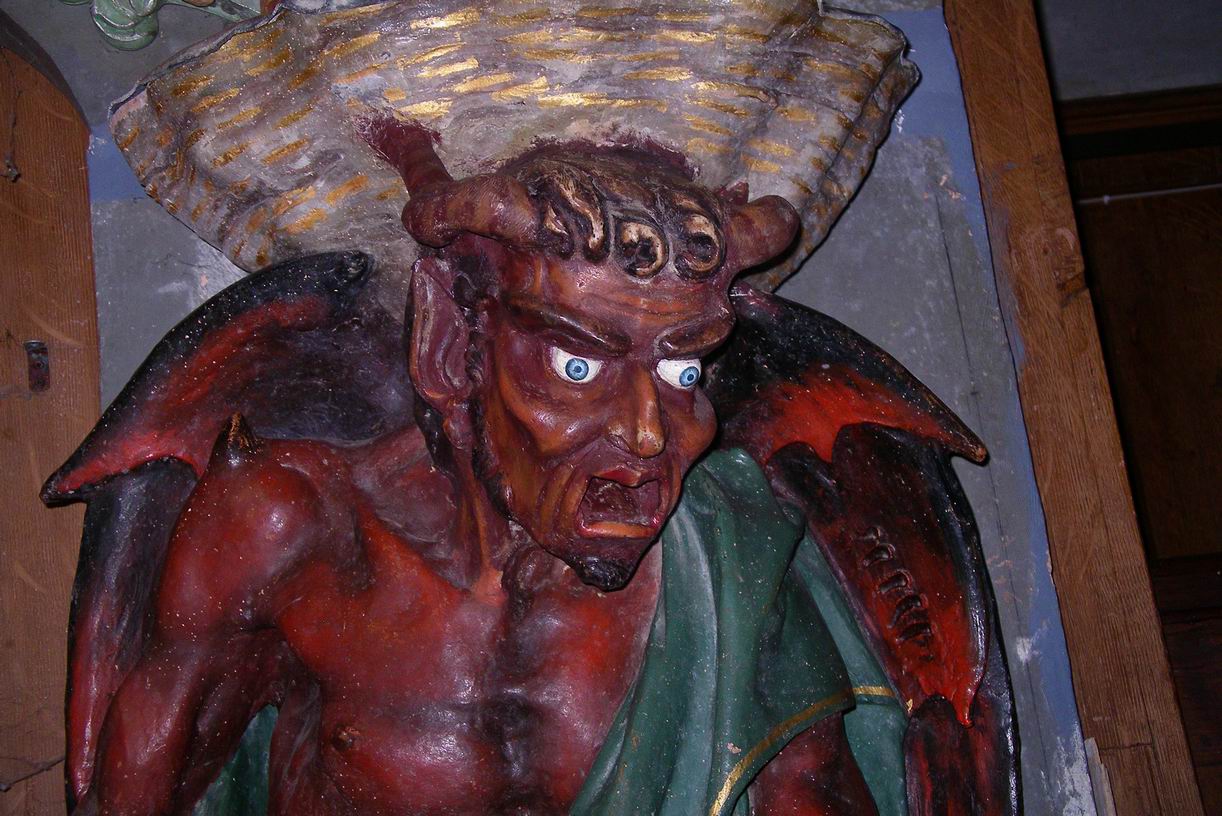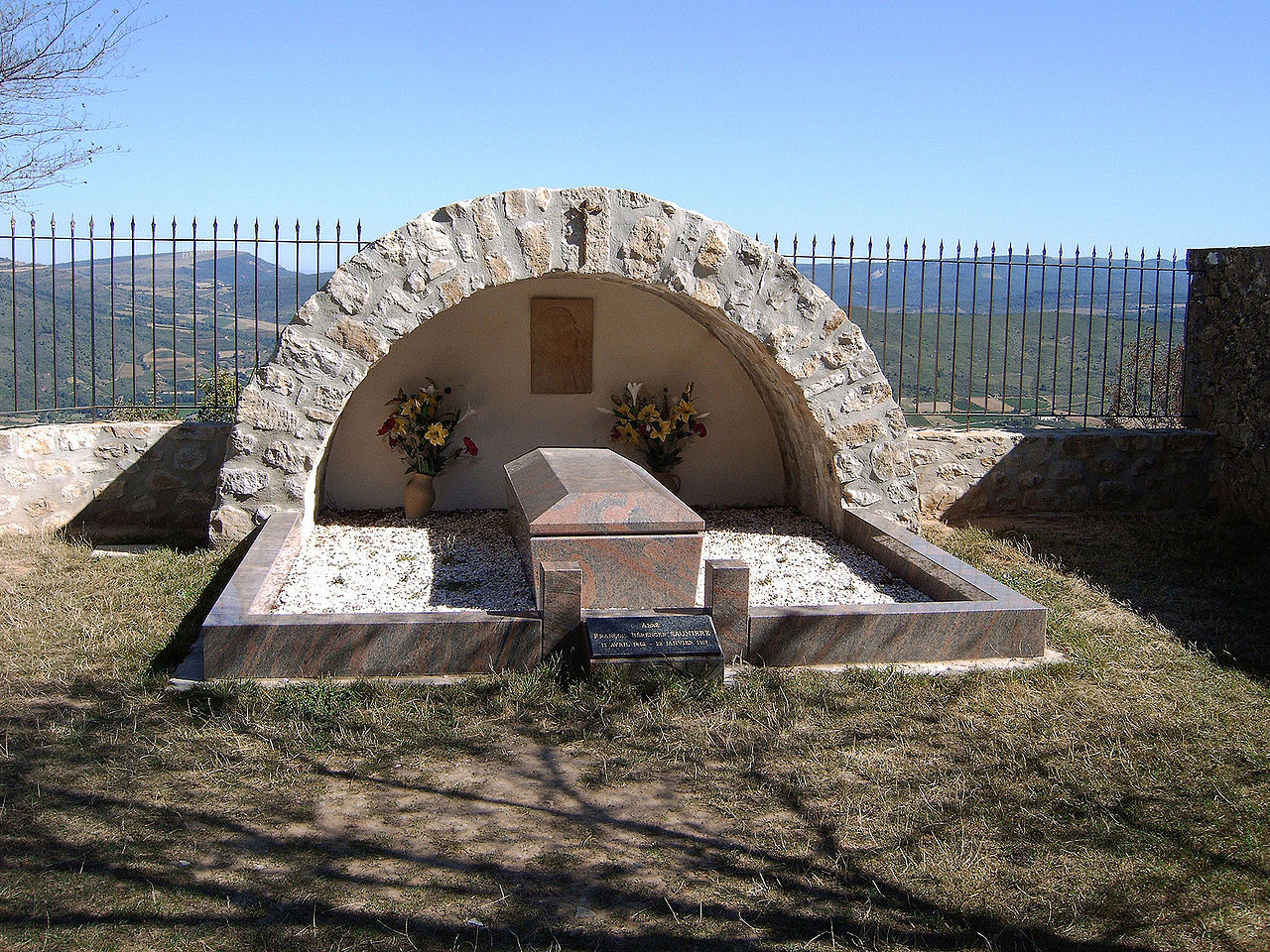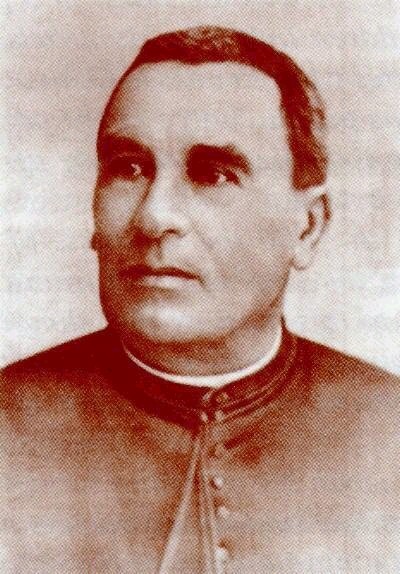
|
|||
Conspiracy theories of Bérenger Saunière and Rennes-le-Château - Unexplained Mysteries
See more at: http://en.wikipedia.org/wiki/B%C3%A9renger_Sauni%C3%A8re
Rennes-le-Château is a castle in small hilltop village in Southern France that is at the center of many conspiracy theories. Some say that priest Bérenger Saunière discovered buried treasure in the 19th century, but there are many conflicting theories and stories about what exactly transpired in this area filled with beautiful scenery etched with deep river canyons. At the end of the 19th century, Bérenger Saunière, the poor parish priest of Rennes-le-Château, all of a sudden started spending a lot more money then he could ever have earned performing his normal duties. He had been assigned to this tiny village in the south of France at the age of 33 and had spent his first few years there in piety and poverty. According to his meticulously kept accounting books, in February 1892 he had a debt of 105 francs and 80,65 francs in his ‘fonds secrets’ (savings). That all changed in the 1890s. From that time on his surviving papers and accounts record a total expenditure of some 660,000 francs, equivalent to EUR 2,500,000 today. He would spend up to 50,000 francs in one month in some periods. His salary as a priest was 900 francs per annum. Towards the end of his life he seems to have had some difficulty paying his bills but weeks before his death he appears to have been making plans once again. Saunière’s financial difficulties coincide largely with the World War I, an indication he couldn’t reach his funds abroad? It’s often said Saunière got his fortune by committing simony or mass trafficking: requesting money for masses he never said. There’s clear evidence that he was guilty of this practice like so many of his colleagues at the time. However, the amounts of money he spent are in no relation to his illegal income from this practice. Detailed analysis of his records has taught he received 110,000 requests to say mass, which is a lot more than he ever could have said when you think a priest could say 3 masses in one day (and didn’t hold sermons every day of course). The going rate for a mass was 1 franc around 1880, increasing up to 1.5 francs at the time of his death. From this he could have earned no more than some 150,000 francs which only accounts for less than a quarter of his recorded spenditure (and which was only part of what he really spent).
Birth of a Mystery Le Depeche du Midi, 15th January 1956Noel Corbu is probably responsible for what the mystery is today. In need of something to attract visitors to his Hotel du Tour (the refurbished Villa Bethania) he started telling a treasure story to his customers. This after he had failed to find any treasure on the domain himself. The story worked like a magnet. In fact he got so busy telling the story that he recorded it on tape for his customers. He enhanced the story somewhat in his enthusiasm and attracted the attention of local newspaper Le Depeche du Midi resulting in three full page articles in January 1956 about this Abbé Saunière, the billionaire priest who had found the Treasure of Blanche of Castille. In reality, there is no shred of evidence that queen Blanche indeed left a treasure in the area that Saunière could have discovered. Some 10 years later, the story was published in book form by French journalist Gérard de Sède: Accursed Treasure of Rennes-le-Château.  Pierre Plantard (left) and Philippe de Chérisey in the 1960sDe Sède’s book marked the start of a misinformation campaign by French adventurer Pierre Plantard and his friend the Belgian Marquis and actor Phillippe de Chérisey. Allegedly, De Sède published a manuscript by Plantard that he edited. In the next couple of years Plantard and De Chérisey used original Saunière material and home made forged documents to construct a story around the mystery of Abbé Saunière by which they meant to “prove” that Plantard was actually a descendent of the Merovingian bloodline and thus a rightful heir to the French throne. To this end they deposited a series of forged documents in the French National Library: Les Dossiers Secrets. The misfinformation campaign got completely out of hand when BBC scenario writer Henry Lincoln got the scent of a good treasure story and with the help of Michael Baigent and Richard Leigh, drew some conclusions that were a million miles away from what Plantard and the Chérisey had intended: not only was Plantard of Merovingian blood; according to Holy Blood and the Holy Grail, the Merovingians were direct descendents of the offspring of Jesus Christ and Mary Magdalene. Today it is almost impossible to distinguish the truth from fantasy. However, most of the leading theories are losely based on facts and legends of the area that can be traced or demonstrated. The half truth is the most difficult to dissect. The Mystery’s historical roots Nicolas FouquetIn the spring of 1645, a shepherd called Ignace Paris found an unknow quantity of golden coins on the lands of Blaise d’Hautpoul, who’s territory included Rennes (at the time not yet called “le-Château”). Blaise was an ancestor of François d’Hautpoul-Rennes, whose wife Marie de Nègre is believed by many to be at the center of the mystery of Rennes-le-Château. Local legend says Paris was killed after having told where he had struck gold. What followed was a long fight between the Jansenist bishop of Alet Nicolas Pavillon, Blaise d’Hautpoul and the brothers Nicolas and François Fouquet. Nicolas was Louis XIV’s treasurer, François became the bishop of Alet’s neighbour Narbonne in 1659, three years after his brother Nicolas Fouquet wrote a letter to Nicolas, describing a meeting with famous French painter Nicolas Poussin in Rome: He and I discussed certain things, which I shall with ease be able to explan to you in detail – things that will give you, through Monsieur Poussin, advantages which even kings would have great pains to draw from him, and which, according to him, it is possible that nobody else will ever be able to rediscover in the centuries to come. And, what is more, these are things so difficult to discover that nothing now on this earth can prove of better fortune nor be their equal. La Muze Historique, (c) Franck DaffosIn September 1661, Jean Loret, who ran a magazine called ‘La Muze Historique’, wrote of a treasure found in the diocese of Alet(-les-Bains), roughly in the same area. Loret worked for the Fouquets and the Duchess of Longueville who maintained an extensive mail relation with Pavillon. The spiderweb stretches wider still. In 1666, Colbert, who had succeeded Nicolas Fouquet as French minister of Finance, founded the ‘Compagnie Royale des Mines et Fonderies du Languedoc’ with the intend to start mining on Blaise d’Hautpoul’s land (much the same like Bertrand de Blanchefort allegedly asked the Knights Templar to start mining the same lands near the Château de Blanchefort in 1130). In return Blaise was formally granted a status ‘de ne dépendre que du roi’: It made him answerable to the King alone. You can read more about this in Franck Daffos’ (French) book le Secret Dérobé or on the website he runs with valued colleague researcher Jean-Pierre Garcia: Rennes-le-Château Archive. There must have been something interesting enough in this region to attract the attention of so many rich and powerful people. The link with Poussin comes full circle with Louis XIV acquiring his famous painting the Shepherds of Arcadia in 1685 from C.A. Herault, a well known arts dealer at the time. The painting adorned the king’s private chambers until his death.  What Bérenger Saunière appears to have found There are numerous theories and ideas as to what Saunière found. Several instances have been recorded in which Saunière made reference to something like a treasure. For example Antoine Beaux, Abbé of Campagne-sur-Aude was attending a dinner party at Saunière’s table once. He remarked “My friend, to see you doing so well, one would think you found a treasure”. To this the host appears to have answered: “Me l’an donat, l’ai panat, l’ai parat é bé lo teni“. It’s Saunière’s dialect of the Langue d’Oc. In modern French it means “Ils me l’ont donné, je l’ai pris, je l’ai apprêtré; eh bien, je le tiens bien.” An English translation would be: “They gave it to me, I took it, I made it work and I will hold onto it.” Antoine Captier, showing the concealed compartment in the BalusterAccording to Antoine Captier, the grandson of Saunière’s bellringer of the same name, a glass vial was found by his grandfather inside a wooden baluster in the 1880s. This wooden support pillar that carried the old pulpit, had been taken down during the work to restore the church. When Captier did his round through the church one evening, he noticed part of the baluster had come loose, revealing a small hidden compartment. Inside he found a small glass tube with a document inside. He gave it to Saunière, who started his digging activities in the graveyard soon afterwards. Several local sources have confirmed this story as documented in Captier’s book and the book of Pierre Jarnac. Captier and Jarnac are generally regarded as among the most serious of researchers. What’s more they are closest to the original sources. The story that Saunière found documents in the hollow visigothic altar pillar is most probably not true. Research reveals that there was no hollow space inside that pillar so it seems unlikely that is true. A last story is that Saunière found a pot filled with golden coins and a golden chalice during the renovations. This too apparently happened during the renovation work on the church altar. Saunière immediately sent the workmen off for the rest of the day. When he was asked what it was they found he replied that it was nothing but a collection of worthless religious medals. The Abbé did give a golden chalice from the time of Bigou to his friend Eugène Grassaud. The chalice still exists. It was donated to the church of Rennes-le-Château by the Order of the Knights of Malta around 1750. As it appears his predeccessor Antoine Bigou stashed it away in the church before he fled to Spain to escape the French Revolution. http://www.renneslechateau.nl/mystery-of-rennes-le-chateau/ comments powered by Disqus Submit News/Videos/Links | Discuss article | Article Link More Unsolved and Unexplained Mysteries |
More can be addded on request. Direct your requests at vinit@theunexplainedmysteries.com
